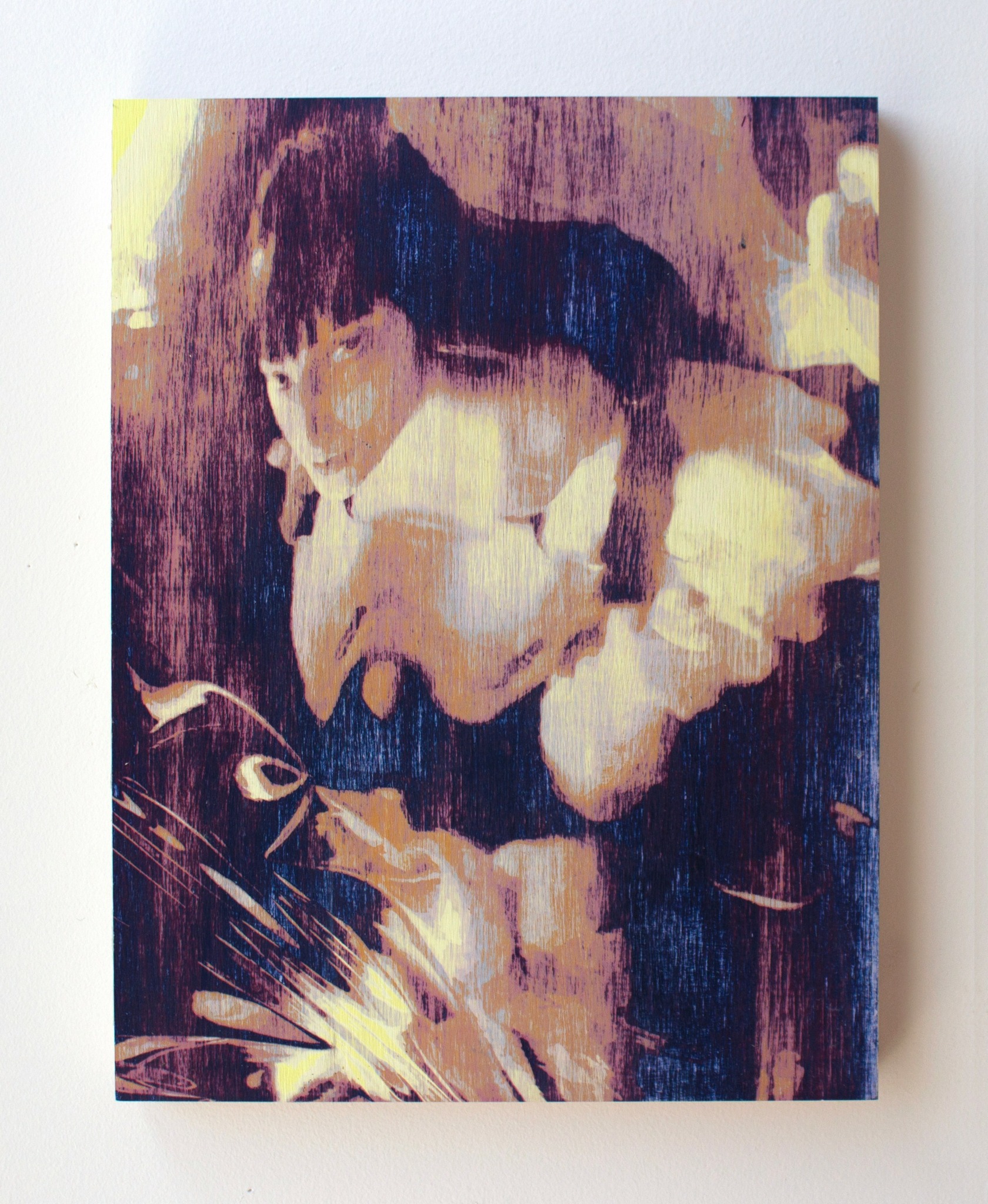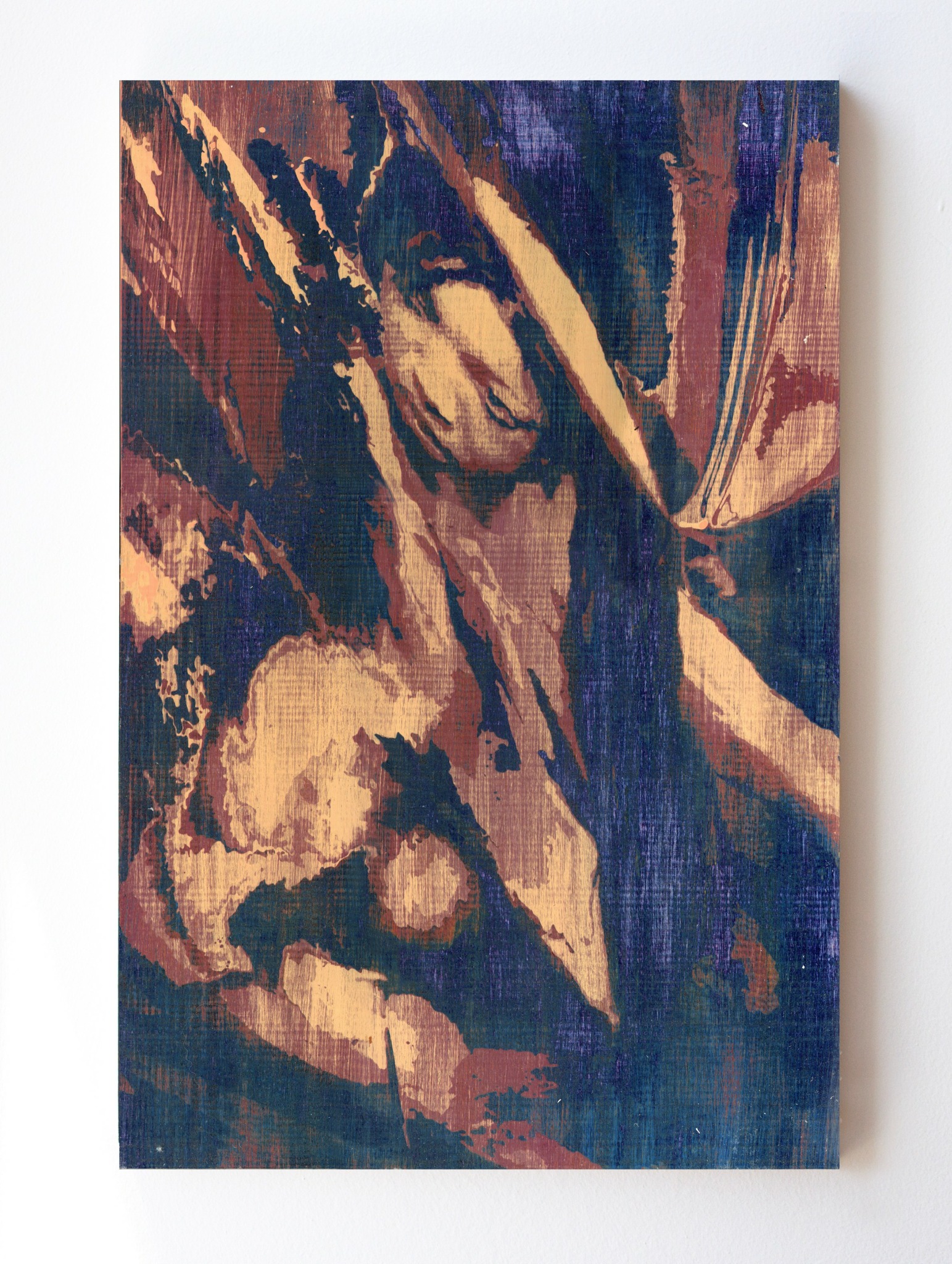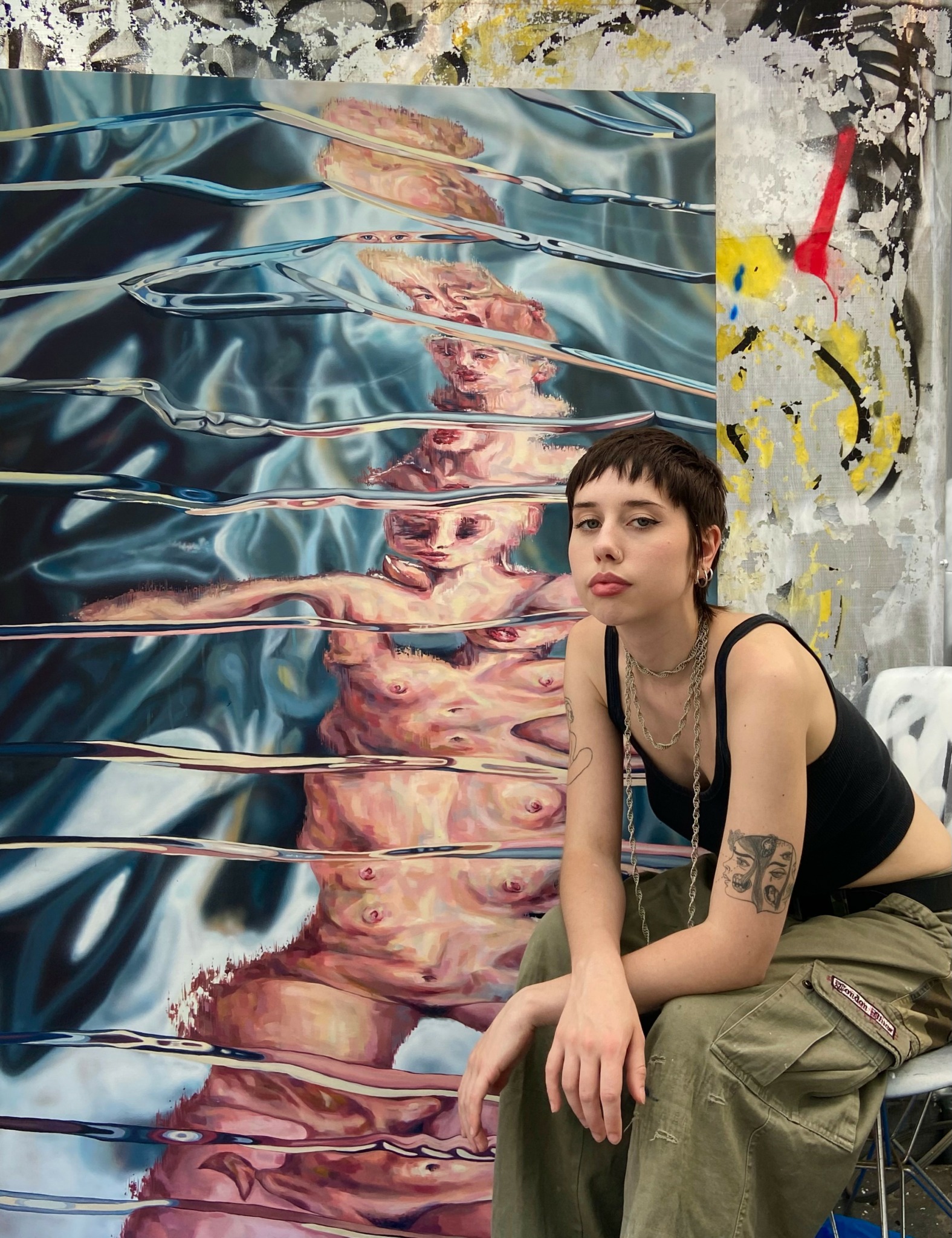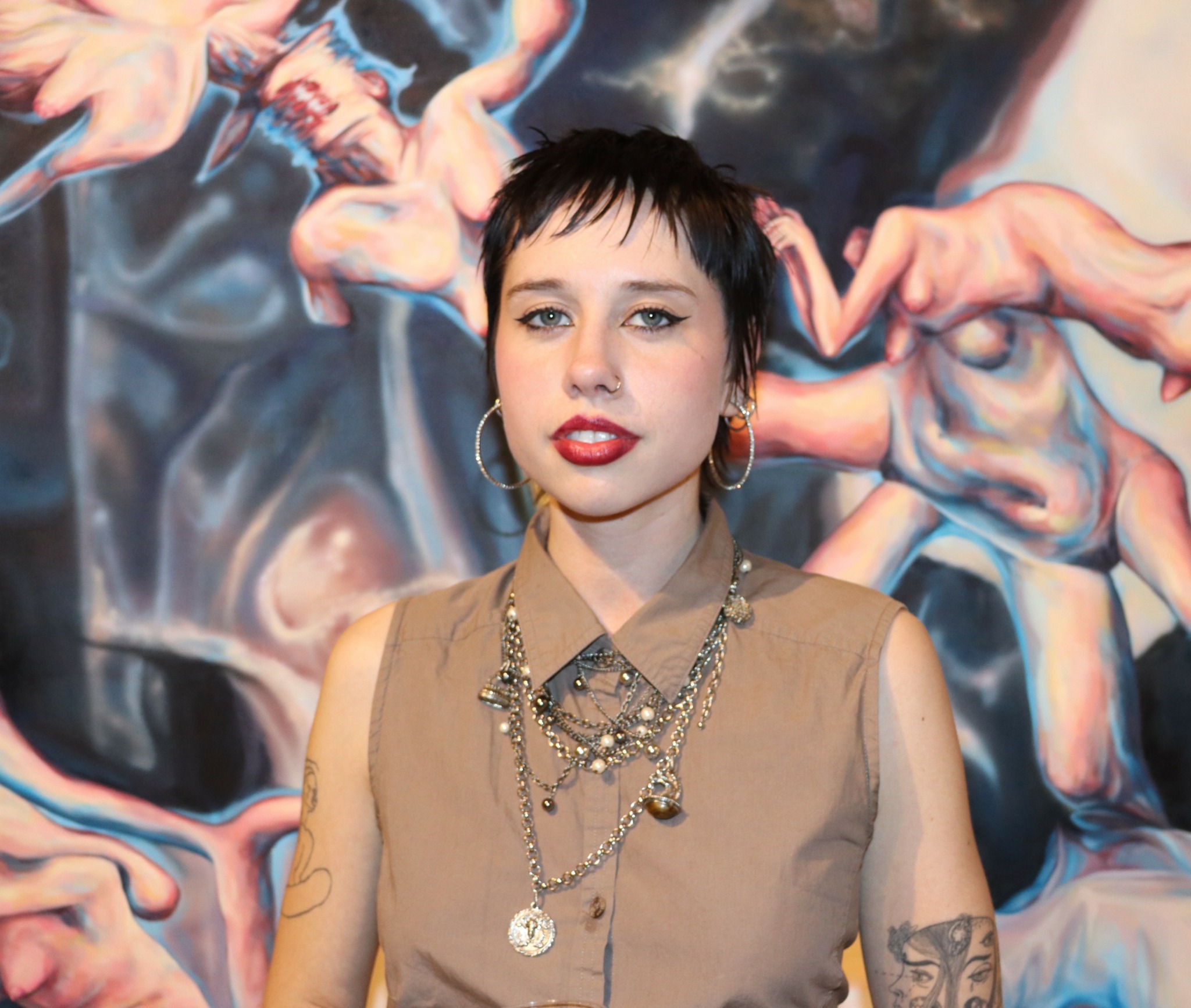We were lucky to catch up with Parker Lily Tuson-Morse recently and have shared our conversation below.
Parker Lily, thanks for joining us, excited to have you contributing your stories and insights. When did you first know you wanted to pursue a creative/artistic path professionally?
As a kid, I grew up in a highly creative environment. My parents are both involved in the arts, and visual arts, along with other forms of creative expression, became a natural instinct for me—a sort of lens through which I viewed the world. This wasn’t something I necessarily thought about or took seriously as a child, but it felt subconscious. I was a highly visual learner, and the way I often expressed my emotions was through some form of creative expression.
Interestingly, my parents never pushed me towards the idea of pursuing the arts as a profession. There was no sense of pressure. In fact, I remember when I first expressed my interest in this career to them, I wouldn’t describe their reaction as particularly ecstatic, I mean, they know the nature of this industry. Yet, I do think that my early environment, which nurtured creativity, inevitably had a profound effect on me and shaped my experiences heavily.
I decided to attend a public arts high school in Toronto, the city I grew up in. Initially, I enrolled in a different major, but within a year I decided to follow my instincts and switch to the visual arts major. I distinctly remember the first month in my new class—I had a moment where I just thought to myself, “This is exactly what I want to do.” Since then, I have stayed true to that conviction, I really just never considered anything else. I knew then, almost instinctively, that this was what I wanted to pursue with my life, and although it has been challenging, I really have never strayed from that initial feeling. At the time, I didn’t yet know what kind of work I wanted to create or what that would look like—only that I was certain I wanted to pursue a career in the arts.
The structure of this high school program was very unique. There were no formal classes or structured training. Instead, the program provided an open environment where students had complete control over their creative exploration. This freedom was pivotal for me. For the first time, I had the space and time to explore my ideas without restrictions in an environment which felt more serious and focused than my early childhood creative explorations. It was during this early period that my commitment to a creative path solidified.
Awesome – so before we get into the rest of our questions, can you briefly introduce yourself to our readers.
I’m an artist from Toronto, Canada, and I grew up in (the previously mentioned) eccentric and creative environment that shaped my early interests in art. After high school, I knew I wanted to pursue a career in the arts, but I also realized I needed a change of environment to fully nurture my practice. I spent my senior year applying to schools across the U.S., seeking a program that would offer both the resources and financial support I needed. I ultimately chose the School of the Museum of Fine Arts at Tufts University in Boston, which provided the funding that made it possible for me to attend.
While studying in Boston, I had the opportunity to show my work in local galleries and participate in shows in Toronto and London. After graduation, I relocated to Brooklyn, where I immersed myself in the arts community, working in established artist studios and galleries in Manhattan and Brooklyn, all while continuing to develop my own painting practice. More recently, I decided to return to Toronto to further establish my practice here. It’s been a unique experience coming back to the city as an adult—it brings up many memories, but it also offers a fresh perspective and a chance to reconnect with a dynamic and supportive community of Toronto artists.
As for my work, I am primarily a painter whose practice blends traditional techniques with digital fabrication tools. My paintings explore figures caught in moments of flux, shifting between realism and abstraction. While my work often sits in the space where these two styles merge, the figure remains central to my practice. Through these shapeshifting figures, I navigate the diverse facets of ‘selves’ exploring how our bodily connections to sexuality and queerness, and how our external relationships—both human and digital—impact our internal world.
In my work, I also incorporate experimental processes, such as using laser engraving as a prosthetic tool for painting. This approach allows me to explore how technology can intersect with traditional art-making and challenge our perceptions of the self. My work draws from archetypal storytelling, surrealist practices like automatism, mirroring, and distortion, and examines how the figure can be deconstructed and reconstructed through both natural and technological interventions.Through my practice I am interested in interrogating the ways technology and external pressures continually shape our understanding of identity, intimacy, and the boundaries of the self.
We often hear about learning lessons – but just as important is unlearning lessons. Have you ever had to unlearn a lesson?
One of the most important lessons I had to unlearn was the idea of the artist as a solitary, hyper-independent figure—a concept I think I absorbed from the media growing up, as well as from traditional, almost mythic portrayals of artists. The notion that an artist creates alone in a studio and then simply shares their work with the world never fully resonated with me, and I now know that that often couldn’t be farther from the truth. Over the years, I’ve come to realize that the idea of the artist as a lone entity is not only outdated, but also limiting. In fact, one of the most nourishing aspects of being an artist is the sense of community. The connections you make with others—whether through collaboration, mentorship, or simply being part of a shared creative space—are vital. Without that support, building a sustainable, meaningful career in the arts would be nearly impossible.
I remember when I was in art school, some professors would emphasize that the most important thing you could leave with wasn’t just actual education, but relationships and connections. At the time, this message felt strange to me, almost transactional. But looking back, I understand the core of what they were saying: even in the most bureaucratic corners of the art world, you need others to advocate for you and help amplify your work. Not only do you need a community for support and solidarity, but often connections are such an important part of opportunities in this industry.
On a more personal level, I’ve also come to realize how much I value being surrounded by like-minded individuals. In a career as unpredictable as this one, having a community of fellow artists—people who understand the unique experience—is not just a luxury, but a necessity. It’s something I now prioritize and nurture, and I truly believe it’s essential for both creative growth and long-term success.
For you, what’s the most rewarding aspect of being a creative?
The most rewarding aspect of being an artist is that art becomes a lens through which I can view and process the world. For me, it’s a way to translate the experiences and emotions I encounter into something meaningful and fulfilling. Art offers a method of transformation, taking what’s happening externally and transmuting it into something that feels purposeful. In addition to the personal satisfaction of creating, the act of being an artist is inherently dynamic. The work is never stagnant; it’s always evolving, which keeps me engaged and excited to return to the studio every day. The challenge of constantly finding new ways to express and explore ideas is something that motivates me.
But beyond my own practice, another incredibly rewarding aspect is engaging with the work of other artists. Seeing the creative output of others, and witnessing new ways of thinking, and creating is deeply meaningful to me. The reason why I was interested in even pursuing this career came from a genuine joy and love of art, so being able to digest and reflect on the work of others, and being able to see work physically, not just through a screen, is always a gratifying experience for me.







Contact Info:
- Website: parkerlily.com
- Instagram: @parkerlilytm
Image Credits
Personal Photo- Imani Walker


